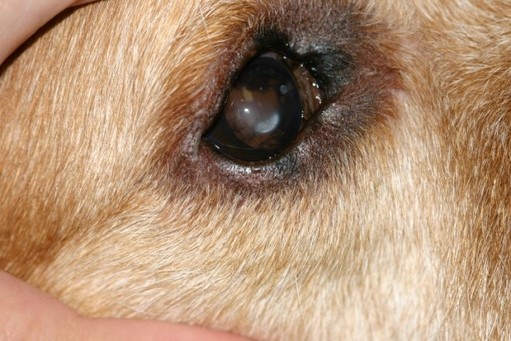Corneal Lipid Dystrophy and DegenerationWhat is it? Corneal lipid dystrophies are an inherited abnormality found in several different breeds of dogs. The non-inherited form is referred to as Corneal lipid degeneration. These dystrophies present typically as round, white crystals within the cornea. In the vast majority of affected dogs, the lesion does not impair vision nor does it require treatment. This condition can be hereditary, frequently seen in Shetland Sheepdogs, Boston Terriers, Chihuahuas and the Siberian Husky. Other underlying conditions, such as previous ulcer, hypothyroidism and hyperlipidemia can also lead to Lipid Degeneration. Triglycerides and cholesterol levels should be tested and dietary changes should be made if the values are elevated. The non-inherited form can be seen in any breed, and is seen often as the result of previous corneal injury. |
Symptoms |
Most pet with corneal dystrophies do not exhibit any symptoms unless a corneal develops.
|
Treatment |
These dystrophies are not painful, however if the lipid crystals penetrate the outer epithelial membrane, an ulcer will occur. A keratectomy (surgical removal of the crystals) would be necessary to resolve the problem.
|

